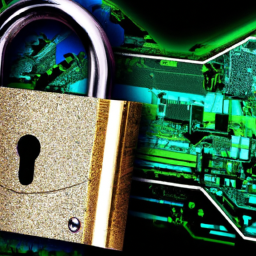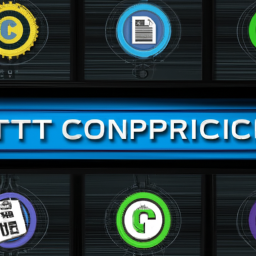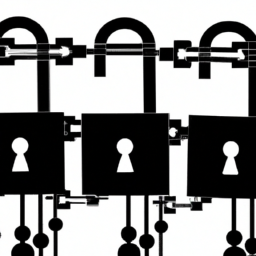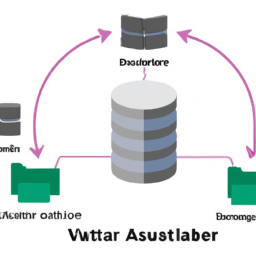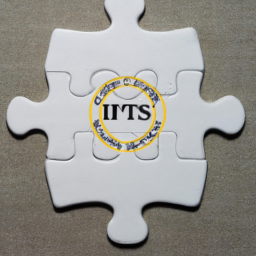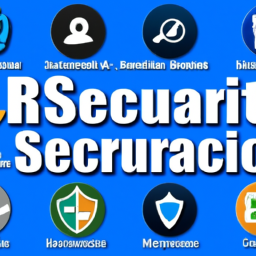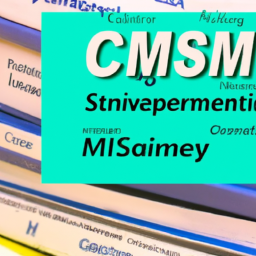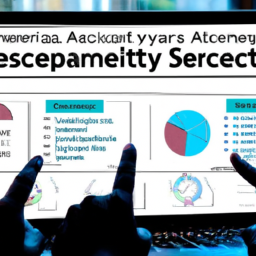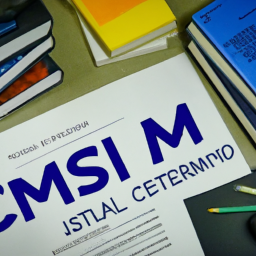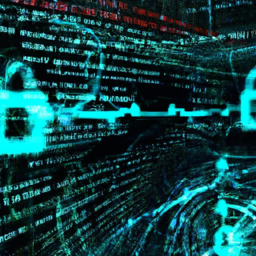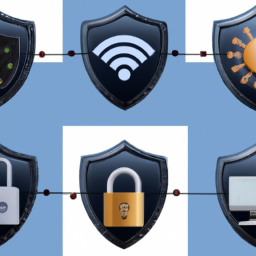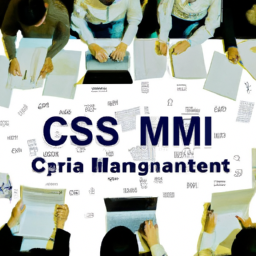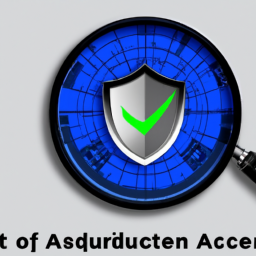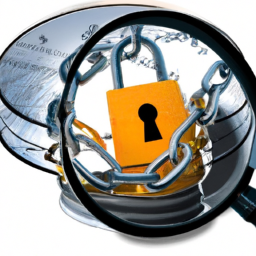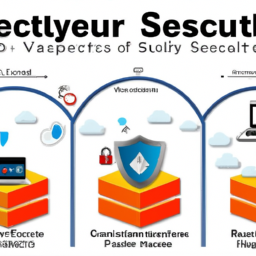Picture information security compliance as a well-constructed fortress, protecting your organization’s valuable data and assets from potential threats. Just like a castle relies on a solid foundation, proper guidelines and procedures are essential to achieve and maintain information security compliance.
In this article, we will provide you with the essential guidelines and procedures to help you build a robust defense system.
To begin, understanding the regulatory landscape is crucial. It’s like mapping out the terrain surrounding your fortress, enabling you to identify potential vulnerabilities and ensure compliance with relevant laws and regulations.
Next, developing a comprehensive information security policy serves as the blueprint for your defense strategy, outlining the necessary measures to safeguard your organization’s information assets.
Once the policy is in place, it’s time to implement robust security measures, like fortified walls and gates, to protect against unauthorized access and data breaches. Regular security audits act as sentinels, constantly monitoring and evaluating the effectiveness of your security measures.
Furthermore, training your employees on information security best practices equips them with the knowledge and skills to be the guards of your fortress.
Lastly, continuously monitoring and updating security measures ensures that your defense system stays up to date with evolving threats. By following these essential guidelines and procedures, you can achieve information security compliance and safeguard your organization’s valuable assets.
Key Takeaways
- Developing a comprehensive information security policy is crucial for safeguarding information assets.
- Regular security audits are necessary to monitor and evaluate the effectiveness of security measures.
- Training employees on information security best practices is essential for compliance.
- Continuously monitoring and updating security measures is important to stay up to date with evolving threats.
Understand the Regulatory Landscape
Understanding the regulatory landscape is crucial for organizations to navigate the complex web of compliance requirements and ensure robust information security measures are in place.
With constantly evolving regulations and increased scrutiny on data protection, staying up-to-date with regulatory requirements is essential. Compliance challenges can arise from a lack of understanding or awareness of the regulations applicable to the organization’s industry or geographic location.
Organizations must identify the specific regulatory requirements that apply to them and ensure their information security practices align with these requirements. This involves conducting thorough research, consulting with legal experts, and staying informed about any changes or updates to the regulations.
By understanding the regulatory landscape, organizations can proactively address compliance challenges and develop a comprehensive information security policy that aligns with the regulatory requirements and protects sensitive data.
Develop a Comprehensive Information Security Policy
To create a robust and effective information security environment, it’s crucial to craft a well-rounded policy that covers all aspects of protecting sensitive data. Here are four key components to consider when developing a comprehensive information security policy:
-
Creating an incident response plan: Prepare for potential security breaches by outlining clear steps to identify, contain, and resolve incidents promptly. This ensures a swift and efficient response, minimizing the impact of any security breaches.
-
Establishing access control measures: Implement strict controls to regulate access to sensitive information. This includes defining user roles, implementing strong authentication methods, and regularly reviewing user access privileges to prevent unauthorized access.
-
Regularly updating policies: As technology and threats evolve, it’s important to review and update the information security policy regularly. This ensures that it remains relevant and effective in addressing the current landscape of risks and vulnerabilities.
-
Educating employees: Develop a comprehensive training program to educate employees about their responsibilities and best practices for information security. This helps create a security-conscious culture within the organization.
By implementing these measures, organizations can lay a solid foundation for information security compliance. Transitioning to the subsequent section about ‘implementing robust security measures,’ organizations can build upon this policy to safeguard their sensitive data.
Implement Robust Security Measures
Implementing robust security measures is essential for organizations to effectively protect their sensitive data and mitigate the risks of potential security breaches. By implementing strong security measures, organizations can prevent unauthorized access, data theft, and other malicious activities that can lead to a security breach. These measures may include using firewalls, encryption techniques, multi-factor authentication, and regular software updates to ensure that systems are up to date and protected against the latest threats.
Additionally, organizations should invest in cybersecurity awareness training for employees to educate them about potential risks and best practices for maintaining information security. By creating a culture of security awareness, organizations can reduce the likelihood of security breaches caused by human error.
To ensure that security measures remain effective, it is important to conduct regular security audits to identify vulnerabilities and make necessary improvements. Transitioning into the subsequent section about conducting regular security audits, organizations can further strengthen their information security posture.
Conduct Regular Security Audits
Regularly conducting security audits is crucial for ensuring the safety of your organization’s sensitive data and protecting against potential security breaches. By conducting regular vulnerability assessments, you can identify and address any vulnerabilities or weaknesses in your information security systems. This proactive approach allows you to stay one step ahead of potential threats and minimize the risk of data breaches. Additionally, it is important to establish an incident response plan to effectively handle any security incidents that may occur. This plan should outline the necessary steps to be taken in the event of a breach, including who to contact, how to contain the incident, and how to restore normal operations. By conducting regular security audits and having an incident response plan in place, you can ensure the overall security and resilience of your organization’s information systems. As you move into the next section about training employees on information security best practices, it is important to recognize that a comprehensive approach to information security requires a multi-faceted strategy.
Train Employees on Information Security Best Practices
Make sure your employees are well-versed in information security best practices to effectively safeguard your organization’s sensitive data. Employee training is a crucial aspect of achieving information security compliance. By providing your employees with the necessary knowledge and skills, you can significantly reduce the risk of data breaches and cyberattacks.
Implementing security awareness programs is an effective way to educate your employees about the importance of information security and teach them how to identify and respond to potential threats. These programs should cover topics such as password management, phishing attacks, social engineering, and proper handling of sensitive data.
Regularly conducting training sessions and workshops will help reinforce these best practices and keep your employees up to date with the latest security trends. By investing in employee training, you’re investing in the overall security of your organization.
Transitioning into the subsequent section about ‘continuously monitor and update security measures’, it’s important to note that employee training is just one piece of the puzzle. To ensure comprehensive information security, you must also continuously monitor and update your security measures.
Continuously Monitor and Update Security Measures
To ensure the ongoing protection of your sensitive data, you need to actively monitor and update your security measures, constantly staying one step ahead of potential threats.
Continuous monitoring is crucial in identifying any security incidents or vulnerabilities that may arise. Implementing a robust security incident response plan will enable you to quickly detect and respond to any unauthorized access attempts or breaches.
Regular vulnerability assessments and management are also essential for maintaining strong security measures. This involves regularly scanning your systems and networks for any weaknesses or potential entry points that attackers could exploit. By promptly addressing any vulnerabilities identified and implementing necessary updates or patches, you can effectively mitigate risks and safeguard your information.
Remember, maintaining compliance with information security guidelines requires ongoing effort and commitment to staying vigilant in protecting your data.
Frequently Asked Questions
How can organizations address the challenges of managing multiple regulatory requirements?
To address the challenges of managing multiple regulatory requirements, you need to focus on regulatory alignment and utilize compliance management tools.
Regulatory alignment involves understanding and aligning your organization’s processes and controls with the requirements of each regulation.
Compliance management tools can help you streamline and automate compliance activities, track and manage regulatory changes, and ensure ongoing compliance.
By leveraging these tools and aligning with regulations, you can effectively manage and navigate the complexities of multiple regulatory requirements.
What are the consequences of non-compliance with information security regulations?
Legal penalties and reputational damage are the two key consequences of non-compliance with information security regulations. Organizations that fail to adhere to these regulations may face hefty fines, legal actions, and even imprisonment.
Moreover, non-compliance can tarnish an organization’s reputation, leading to a loss of trust from customers, partners, and stakeholders. This can result in a decline in business opportunities and partnerships, ultimately impacting the organization’s bottom line.
It’s crucial for organizations to prioritize information security compliance to avoid these severe consequences.
How can organizations ensure that their security measures are effectively protecting sensitive data?
To ensure the effectiveness of your security measures in protecting sensitive data, it’s crucial to regularly evaluate them. Start by conducting comprehensive risk assessments, identifying vulnerabilities, and implementing appropriate controls.
Regularly test and update your security measures to address any new threats or weaknesses. Train your employees on best practices and enforce strict access controls.
Additionally, consider implementing encryption and data loss prevention solutions to further safeguard sensitive information.
What are some best practices for conducting security audits to identify vulnerabilities?
To conduct effective security audits and identify vulnerabilities, you need the right tools and techniques. Think of security audit tools as your trusty sidekicks, helping you uncover hidden weaknesses. These tools, like vulnerability scanners and log analyzers, provide a comprehensive view of your systems.
Additionally, employing penetration testing techniques allows you to simulate real-world attacks and discover potential entry points. By combining these methods, you can confidently identify and address any security gaps in your organization’s defenses.
How frequently should employees receive training on information security best practices to ensure compliance?
To ensure compliance with information security best practices, it’s crucial that employees receive regular training. Employee engagement is vital in promoting a culture of security awareness.
Training effectiveness can be maximized by conducting sessions at regular intervals, such as annually or biannually, to keep employees updated on the latest threats and preventive measures.
By providing ongoing training, organizations can empower their employees to actively contribute to information security and mitigate potential risks.
Conclusion
In conclusion, achieving information security compliance requires a proactive approach and adherence to essential guidelines and procedures.
By understanding the regulatory landscape, developing a comprehensive information security policy, and implementing robust security measures, organizations can ensure the protection of their valuable data.
Conducting regular security audits and training employees on best practices are also crucial steps in maintaining information security.
An interesting statistic to note is that, according to a recent study, 95% of all cybersecurity breaches are caused by human error, highlighting the importance of employee education.
It’s crucial to continuously monitor and update security measures to stay ahead of evolving threats and ensure a secure environment for your organization.




